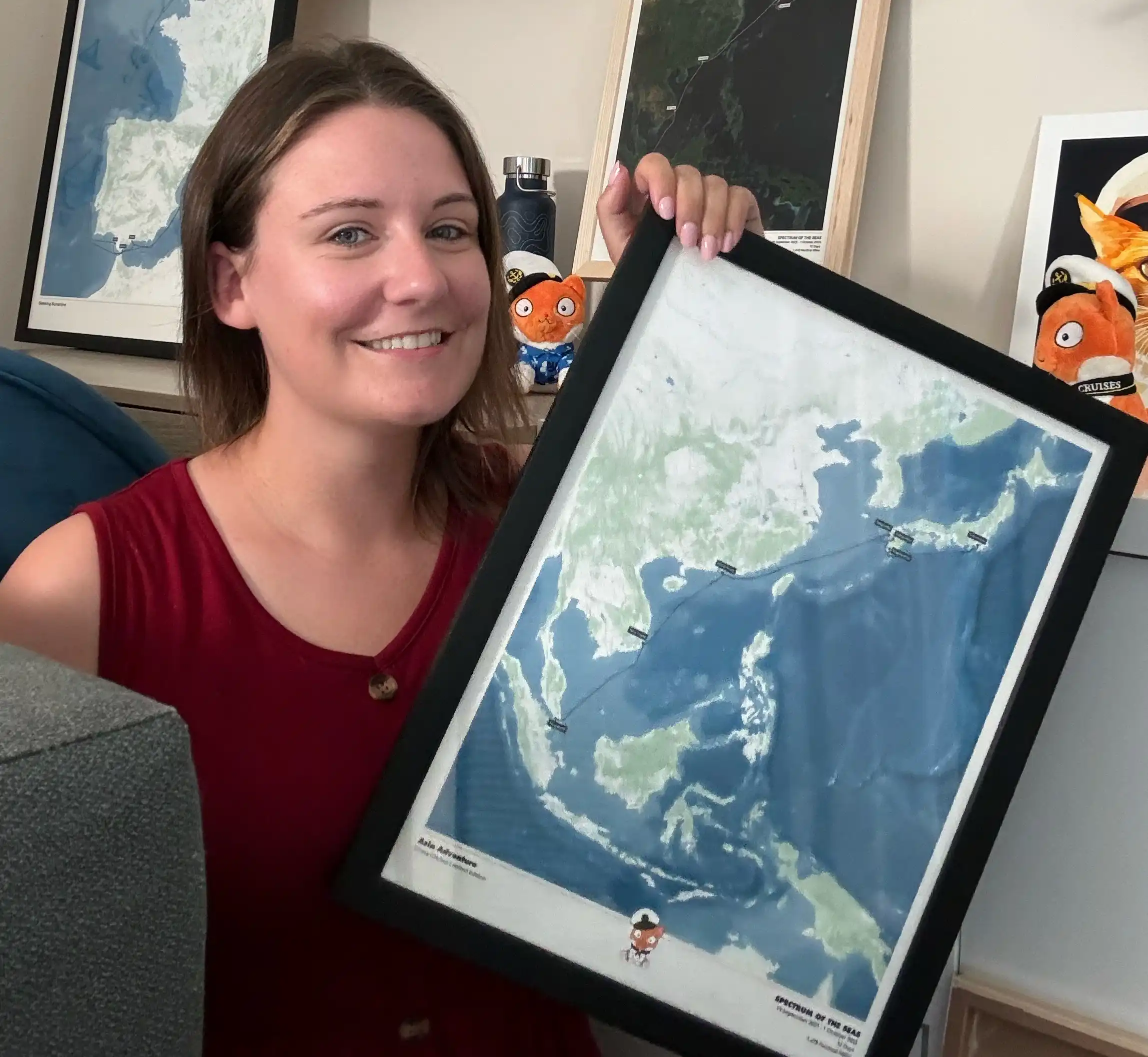If you grew up in the wake of James Cameron’s phenomenally successful Titanic film and found yourself sobbing at the doomed relationship of Jack and Rose, you might have wondered (after drying your tears, of course), if Ocean Liners like Titanic still exist.
Luckily for you wannabe Kings and Queens of the world, the answer is Yes.
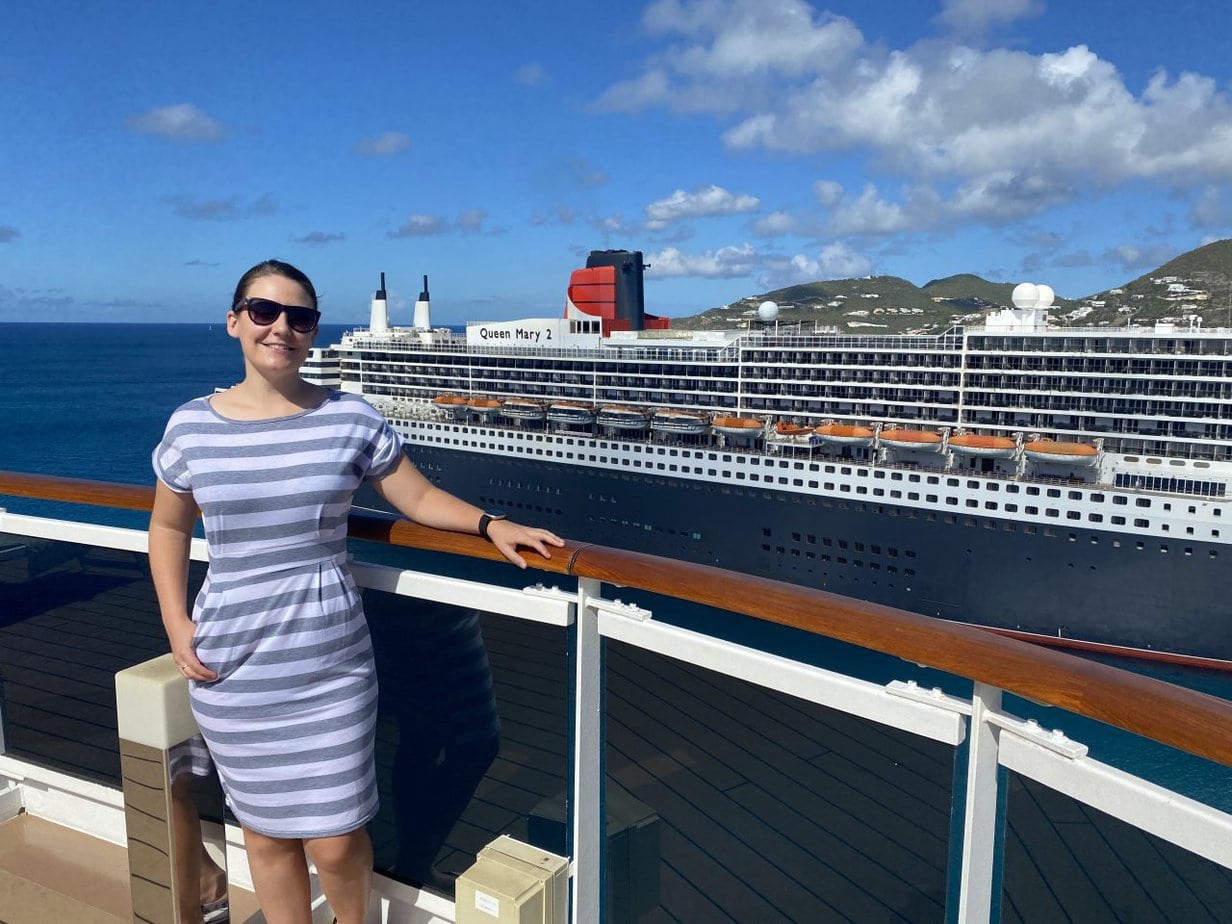
Do Ocean Liners Still Exist?
Ocean Liners do still exist.
There is only one Ocean Liner still sailing, the RMS Queen Mary 2. She regularly completes Transatlantic voyages between Southampton in the UK to New York City
Other Ocean Liners, like Queen Elizabeth 2, the Original Queen Mary and the SS Rotterdam have found a second life as floating hotels.
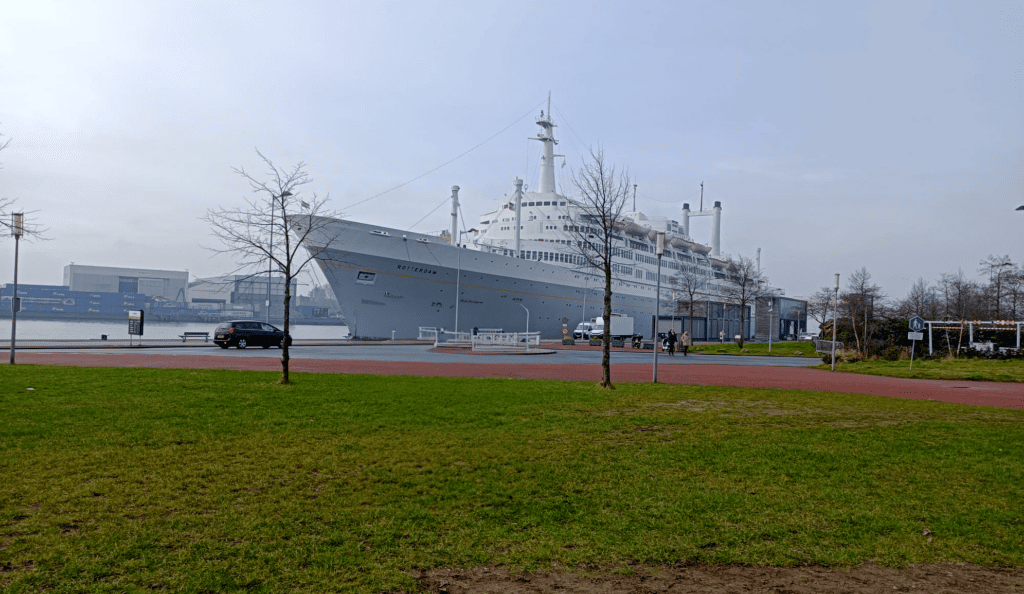
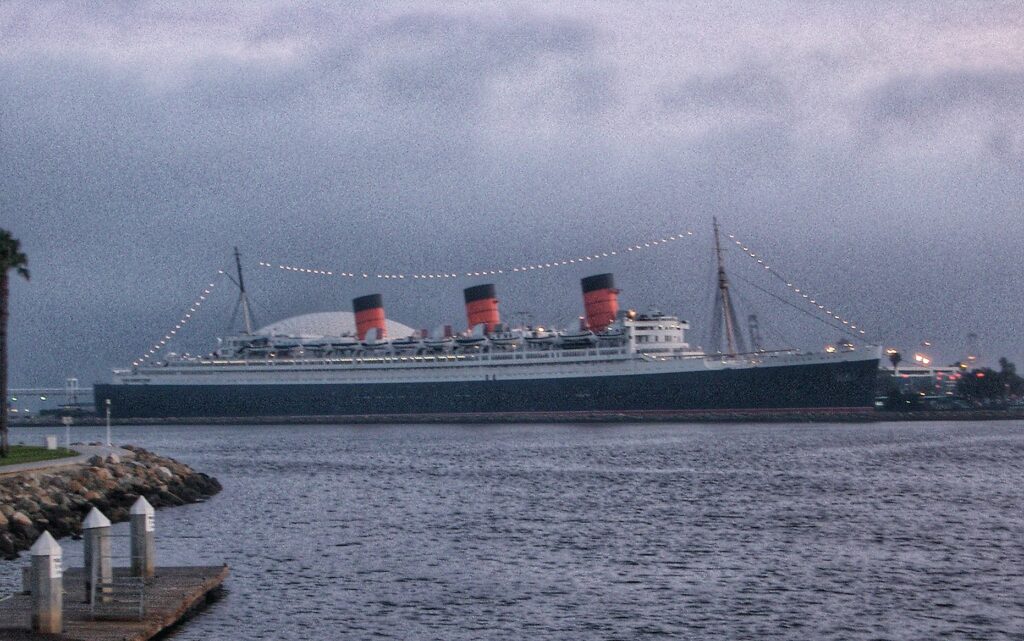
Ocean liners have fallen out of favour in recent years due to the increase in cruise ships being built. The experience of sailing on an Ocean Liner is still enjoyed by many people each year though.
It’s important to remember that Ocean Liners and cruise ships are two very different things. They are differ in both design and function.
What Makes a Ship an Ocean Liner?
Many people wrongly assume that just because a ship travels long distances – such as across the Atlantic ocean – they must be Ocean Liners. This isn’t the case.
An Ocean Liner is designed, engineered, and built specifically for the purpose of crossing the ocean on a set schedule – similar to how you would make a scheduled train or a bus journey.
Ocean Liners might boast similar amenities to cruise ships, but the build is quite different.
Fun fact: Ocean liners weren’t originally designed just for carrying people. The RMS in RMS Titanic stands for “Royal Mail Ship”, indicating that the ship held a license for the (lucrative) transport of mail between England and the United States.
How is the Design of an Ocean Liner Different to That of a Cruise Ship?
Difference in Bow Shape
Ocean liners feature a longer and more pointed bow. Why? Because they need to be able to travel through bad weather while maintaining a high speed.
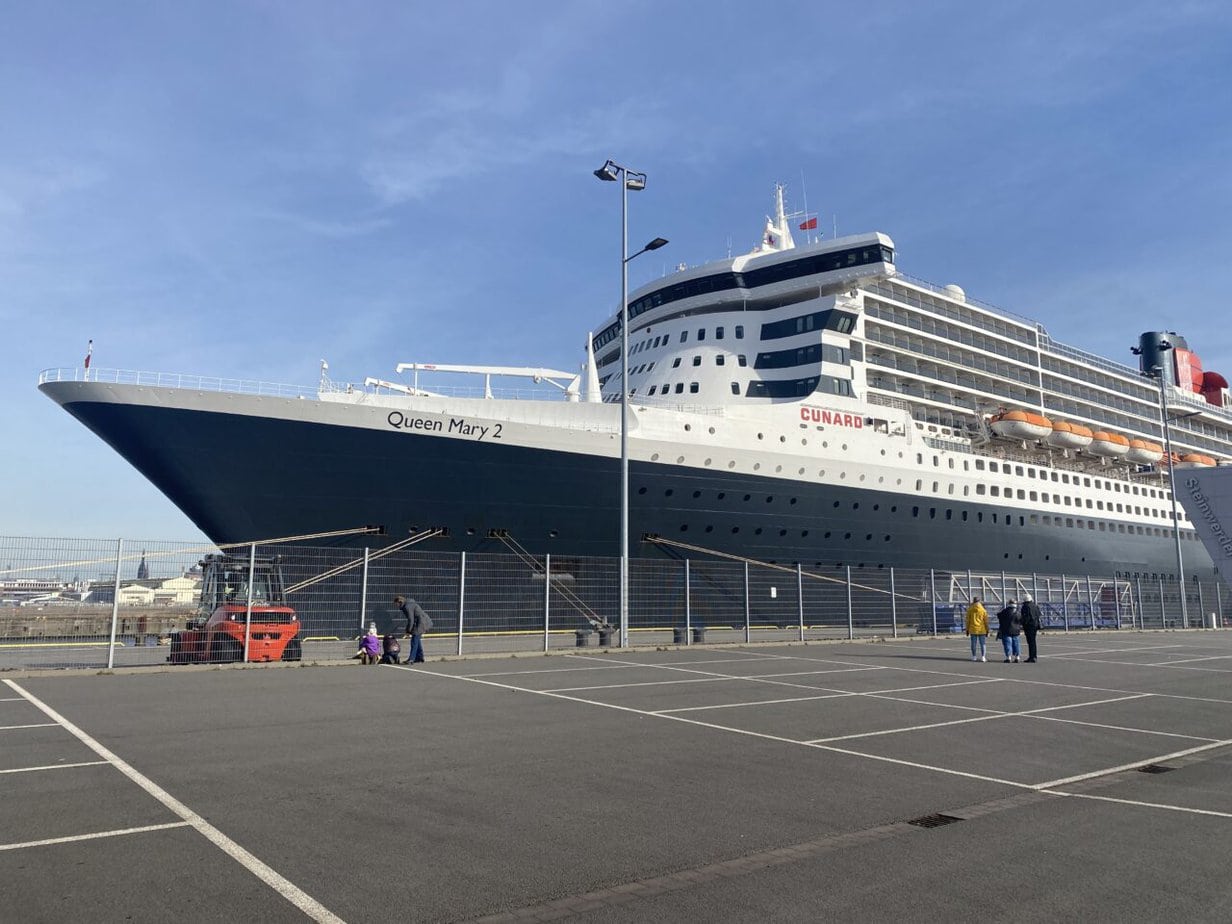
Cruise ships frequently try to avoid storms. They often add “Sea Days” or miss ports of call to avoid bad weather.
Ocean Liners are far better designed to be able to deal with bad weather. This is what makes Ocean Liners perfect for crossing long distances such as the Atlantic Ocean.
How The Ships Sit in The Water
An Ocean Liner sits lower in the water than a cruise ship.
Think of the ship’s lower profile and pointed bow as acting as a knife to cut through water and waves, without breaking a sweat.
Ocean Liners can travel at a higher speed than a cruise ship.
The only Ocean Liner currently in service is the Queen Mary 2. She can travel at 30 knots (35 MPH.) Cruise ships normally sail at between 18 and 20 Knots (20 -23 MPH)
Most cruise ships in comparison cruise at between 18 and 20 knots. This is about 20 – 23 miles per hour.
Difference in Hull Thickness
An ocean liner generally has a thicker hull than a cruise ship, in order to be able to better endure the open ocean.
Queen Mary 2 features steel hull plating. It is described as: “Extra thick for rigidity during Atlantic crossings.”
Cruise ships can and do cross the Atlantic and other open oceans, but they aren’t designed to be repeatedly doing this journey after journey.
They are better suited to sailing along the coast, making multiple port stops.
Queen Mary’s hull is actually around twice as thick as that found on most Cruise Ships.
To learn more about the differences between ocean liners and cruise ships, check out this post:
Cruise Ships vs Ocean Liners – Measurable Differences You Need to Know
Why Aren’t Ocean Liners Built Anymore?
They are rarely built anymore because cruise ships provide a higher return on investment than Ocean Liners. The last ocean liner to be built was the Queen Mary 2 in 2003.
There is less demand for Ocean Liners from modern-day travellers when compared to cruise ships.
Modern big cruise ships are increasingly able to do the things that Ocean Liners were built for.
Modern cruise ships now have the ability to cruise long distances and sail through bad weather.
There is no need for Ocean Liners to be built just to transport people across oceans. People rarely emigrate from one continent to another in great numbers by ship, as they once did.
As a result, cruise lines have stopped building Ocean Liners and instead changed to producing cruise ships.
The design of cruise ships has changed dramatically in the last few decades. The average size of cruise ships has increased, and demand for cruising has too.

Cruise ships often have many balcony cabins which give them a less sleek, almost top-heavy appearance.
Cruise lines can make more money selling the more expensive balcony cabins. Their design has changed over the years to fit in as many balcony cabins as possible.
There is Less Interest in Ocean Liners
Cruises on cruise ships (usually) begin and end at the same port. It’s akin to a floating city that tours you around an itinerary and then drops you back off where you started from.
An Ocean Liner is designed to take guests from point A to point B. They run a scheduled service and make few – or no – port stops.
A voyage on an Ocean liner may start in Southampton in the UK, and end in New York City.
To return home, guests need a separate flight or a second voyage. From the perspective of the modern traveller, a cruise is usually simpler and cheaper, than taking a long trip on an ocean liner.
“Repositioning cruises” are a good option if you want to cruise on a budget. Some of the best and cheapest cruises that I’ve ever been on have been repositioning cruises.
Cruise Ships Are Able to do Repositioning Cruises
Cruise ships are able to sail on repositioning cruises – similar to the journeys that an Ocean Liner would traditionally make.
For this reason, there is no need to keep building Ocean Liners. Cruise ships are far more flexible.
The majority of cruise ships will complete a season in one location – like the Mediterranean for example, then move to another destination – like the Caribbean for the winter months.
It is easier to sell cruises in the Caribbean in the winter where the weather is better. This is where demand is highest and cruise lines can easily fill their cabins.
Find out more about repositioning cruises below:
You Need To Take a Repositioning Cruise – 7 Huge Reasons Why
Flights Are Easily Accessible
With flights becoming cheaper and more accessible, it doesn’t make sense to sail on an Ocean Liner across the ocean, in the same way as it did in the past.
A trip between Southampton and New York typically takes around a week. You can fly to New York in a matter of hours.
Flights are much cheaper and faster, so taking a cruise across the Atlantic or Pacific is usually reserved for those who do so for the Cruise Liner experience, or don’t want to fly.
When Was The Golden Age of Ocean Liners?
If you’re thinking about the Golden Age of Ocean Liners, chances are you’re picturing the Titanic.
A LOT has changed in ship design since the Titanic was constructed. To learn how she compares to the modern Royal Caribbean fleet, check out this post:
Modern Cruise Ships vs The Titanic: Illustrated Size Comparison
Ocean Liners, a Brief History
Robert Fulton, an American inventor, designed and developed the first steam-powered ships in the early 1800s, and it wouldn’t be long before the idea of a steam-powered ship to cross the Atlantic came.
Reliable steamships, unlike those powered by wind-driven sails, which are obviously dependent on the wind, made the prospect of regular ocean crossings accessible, and more importantly, marketable.
A faster crossing meant a ship needed fewer provisions and that meant less weight and less fuel, which meant these companies were able to make a profit from selling ocean voyages.
When Did Ocean Travel on an Ocean Liner Become Accessible to Everyday People?
It still took some time, almost fifty years, for the technology to develop to the point where it was safe for the ship companies and practical for the average traveller.
The paddle wheels that you still see on riverboats in picture books, as well as backup sails, went away, replaced by screw propellers that were safer and more reliable on the open ocean.
Which Companies Starting Building Ocean Liners?
Companies like Cunard and White Star (who would later build Titanic) emerged as England’s top shipbuilders.
Germany, too, who had their own ambitions to surpass England as an ocean power, also began investing money in building Ocean Liners. Each company always wanted to be able to say that they’d built the fastest ship.
The Blue Riband was an accolade awarded for the fastest crossing of the Atlantic by a passenger ship.
To be awarded this was a great advertisement for any company or ship. Passengers would be very keen to book and travel on the fastest ships.
Eventually, by the early years of the 20th century, ship speed had hit a plateau. It became obvious that going too fast above a certain point meant vibrations felt on the ship, which passengers found uncomfortable.
Luxury Travel
This idea of luxury travel led to the creation of the Titanic.
She was meant to be not only fast but to be unparalleled in her onboard accommodation. It was said that her steerage rooms were more well-appointed than other lines’ second classrooms.
She was designed to redefine what an Ocean Liner was and to make White Star Lines arguably the best-known shipping operator in the world.
But, as they sadly found out, even a massive steel ship with numerous safety features can suffer catastrophic damage after colliding with an iceberg. The Titanic sank to the bottom of the icy North Atlantic in 1912.
When Did The Great Ocean Liner Era Come to an End?
Two years after Titanic, the First World War broke out, which put the ocean liner business on hold.
Some ships were repurposed to carry troops, and some of them were sunk by the German Navy.
Combined with the later Great Depression, which was followed by a second, even more, destructive war, and then added to the advent of commercial aviation, the era of the great Ocean Liners came to an end.
Which Ocean Liners Are Still Sailing?
There is one purpose-built Ocean Liner sailing the seas: the RMS Queen Mary 2.
The Queen Mary 2 is owned by Cunard and she regularly completes transatlantic voyages from the UK to the USA and back.
I was lucky enough to take a winter transatlantic crossing on her. Unfotunately the sea were very rough – and I was so grateful that I was on the last Ocean Liner at sea!
The Queen Mary 2 has multiple pools and hot tubs, a library with 8,000 books, a buffet restaurant that’s open 24 hours a day, the first-ever planetarium at sea, and numerous other amenities.
Find out about my rough transatlantic crossing here:
Fun fact: the QM2, as it is nicknamed, transported the first copy of Harry Potter and the Half-Blood Prince, in a locked steamer trunk, from England to America!
Do Ocean Liners Still Sail Across The Atlantic?
The one remaining ocean liner, the Queen Mary 2, regularly completes transatlantic voyages.
She has also completed world cruises and other long trips and is sometimes used for more traditional cruise itineraries.

Before You Go
To find out how Cunard’s Ocean Liner compares to travelling on a cruise ship, read this article next:
MSC vs Cunard – How do They Compare? (Dress Codes, Ships and Entertainment)
Are sailings with Cunard suitable for young adults? Or are they more suited to an older cruise passenger? Chris Frame, a Maritime Historian, Writer, Blogger and Podcaster gives his expert opinion in the fascinating article below:
If you are considering a cruise, you might be wondering when is the cheapest month to travel. Read the article below to find out all about how to get a great cruise deal:
When is the Cheapest Month to go on a Cruise? (Real Examples) – Where and When I Travelled
Book a Cruise
If you are looking to book your next cruise adventure, my friendly, knowledgeable partner travel agents can help!
They can help you find the cruise that will suit you and your family. It never costs more than booking directly with the cruise line, and you get impartial advice, and often a better price or added extras – like onboard credit that you wouldn’t get booking direct.
Fill in the form below and we will get back to you.
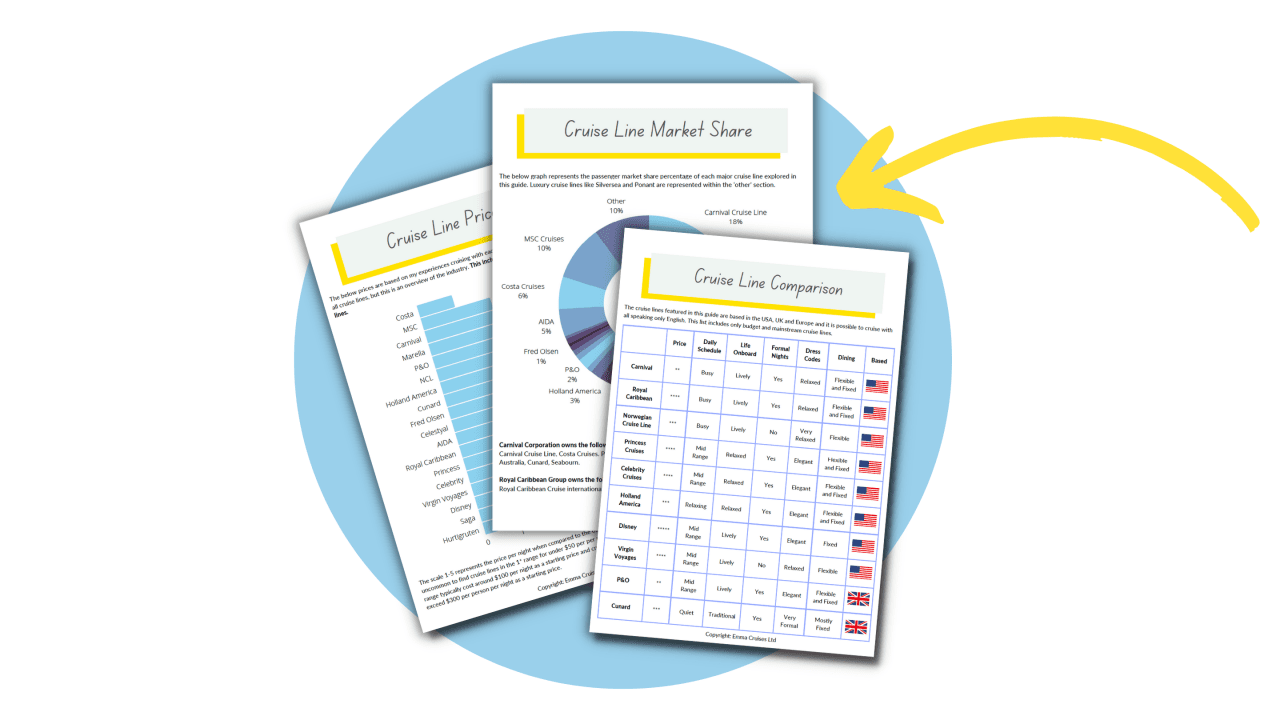
Free Insiders Cruise Line Guide
Ever wondered how the mainstream cruise lines compare? Cruise lines won’t tell you this, but I will.
This FREE guide shows you everything you need to know to find your perfect cruise line.
Whenever I take a cruise I order a print of my trip. It uses the real satellite data from the cruise and is always a great conversation starter!
I'm building an impressive collection...
Code EMMACRUISES will get you 10% off

